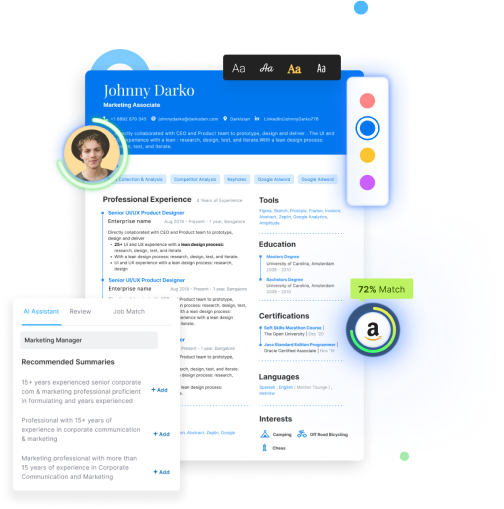Did you know that about 161,900 openings for teacher assistants are projected each year, on average, over the next decade?
While many paraprofessionals work in schools, the role spans multiple industries including healthcare, legal, and social services - making it a versatile career path with growing demand.
That means there's no better time than now to understand exactly what's required in a paraprofessional job description and how to position yourself effectively.
Let’s dive straight into the 5 key parts of a paraprofessional job description and how you can shine in each.
1. Job Overview and Role Clarity
Every paraprofessional job description starts with an overview.
In educational settings, paraprofessionals support teachers and students, including roles in special education. In healthcare, they assist medical professionals by providing patient care and managing records. In legal settings, they may support attorneys with documentation, research, and client communication.
Your main tasks could include:
- Assisting students with lessons or classroom behavior (education)
- Recording patient vitals and supporting mobility (healthcare)
- Organizing legal documents and preparing case summaries (legal)
Pro Tip: Always tailor your resume summary to match keywords in this section. Highlight your passion for the domain you're applying - education, healthcare, or legal and specific experiences relevant to the job description.
Also Read: How to write a paraprofessional resume?
2. Essential Responsibilities
This section outlines what you’ll do day-to-day. Depending on the industry, responsibilities can include:
Education:
- Assisting with lesson preparation
- Supporting students one-on-one or in groups
- Maintaining classroom discipline
Healthcare:
- Helping with patient hygiene and meals
- Recording health data
- Assisting in basic medical tasks under supervision
Legal:
- Conducting legal research
- Drafting or organizing documents
- Assisting with case management
When applying, reference the specific responsibilities in your target field, using concrete examples from your past roles or volunteer experiences.

3. Required Qualifications and Skills
Paraprofessional positions typically require at least a high school diploma or GED. Some roles - especially in healthcare or legal fields - may ask for certifications or specific coursework.
Commonly Required Skills Across Domains:
- Patience and empathy
- Clear and professional communication
- Strong organizational abilities
- Basic technical/computer literacy
Pro Tip: Highlight both hard and soft skills explicitly listed in the job description in your resume and cover letter. For instance, if the job emphasizes patience, describe situations demonstrating your calmness under pressure.
Also Read: What is the role of a paraprofessional?
4. Preferred Experience and Credentials
Beyond basic qualifications, employers often prefer candidates with related experience or specialized training:
- Education: Experience in schools, child development certifications, knowledge of IEPs
- Healthcare: Certified Nursing Assistant (CNA), patient care experience
- Legal: Paralegal training, internships at law firms
Don’t be discouraged if you lack formal credentials. Emphasize related roles like tutoring, caregiving, or document handling that show transferable skills.
5. Working Conditions and Physical Demands
Paraprofessional roles can be physically and emotionally demanding:
- In schools: facilitating energetic classrooms
- In healthcare: managing patient care, working long shifts
- In legal: executing time-sensitive tasks under pressure
Acknowledge these in your application. Demonstrate that you’re aware of the role’s realities and equipped - physically and mentally - to handle them.
How to Ace Your Application
- Customize Your Resume: Align your resume with the job description using keywords like “patient support,” “case management,” or “lesson assistance.”
- Craft a Compelling Cover Letter: Show genuine interest in the field and clearly connect your background to the job requirements.
- Prepare for Interviews: Have specific examples ready that match the responsibilities in the description, no matter the domain.
Also Read: How to write a resume for new teacher roles?
Next Steps
Understanding the paraprofessional job description is just your first step toward landing your ideal role.
To further elevate your application and interview skills, Hiration provides powerful tools to boost your success:
- Resume Builder: Easily tailor your resume to highlight relevant skills, experience, and achievements matching the paraprofessional job description.
- Mock Interview: Practice real-world interview scenarios to build confidence and prepare effectively.
- LinkedIn Optimizer: Polish your online presence and showcase your educational passion and expertise to attract potential employers.
Explore how Hiration can empower your job application and accelerate your career today!



